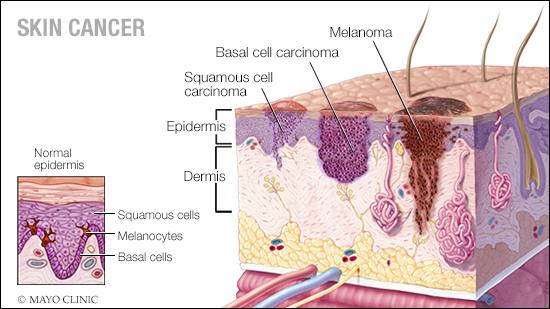-
Living With Cancer: Skin cancer — diagnosis and treatment
 Skin cancer: Diagnosis and treatment
Skin cancer: Diagnosis and treatment
Health care providers use Roman numerals I through IV to indicate a cancer's stage. Stage I cancers are small and limited to the area where they began. Stage IV indicates advanced cancer that has spread to other areas of the body. For skin cancer, the stage, as well as the size, type, depth and location of the lesions, helps determine which treatment options will be most effective. Small skin cancers limited to the surface of the skin may not require treatment beyond an initial skin biopsy that removes the entire growth. If additional treatment is needed, options may include freezing, excisional surgery, chemotherapy and radiation therapy. Learn more about the diagnosis and treatment options for skin cancer.
Flaxseed and prostate cancer risk
There is limited evidence to support the idea that taking flaxseed might lower your risk of prostate cancer. Some studies have suggested that flaxseed may positively affect the prostate. Other studies have shown no positive effect. Learn more from Dr. Erik Castle, a Mayo Clinic urologist.
Lip cancer
Lip cancer can occur anywhere along the upper or lower lip but is most common on the lower lip. Risk factors include excessive sun exposure and tobacco use, particularly pipe smoking. Treatment usually involves surgery to remove the cancer, and possibly radiation therapy and chemotherapy. Learn more about lip cancer and the treatment options that might be right for you.







